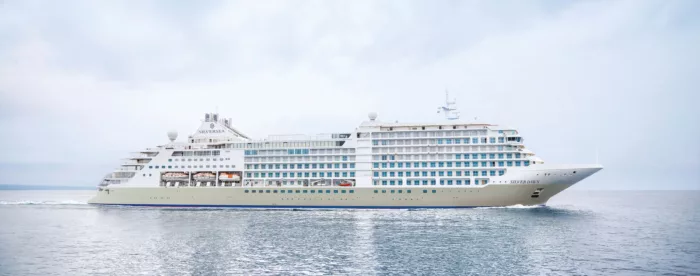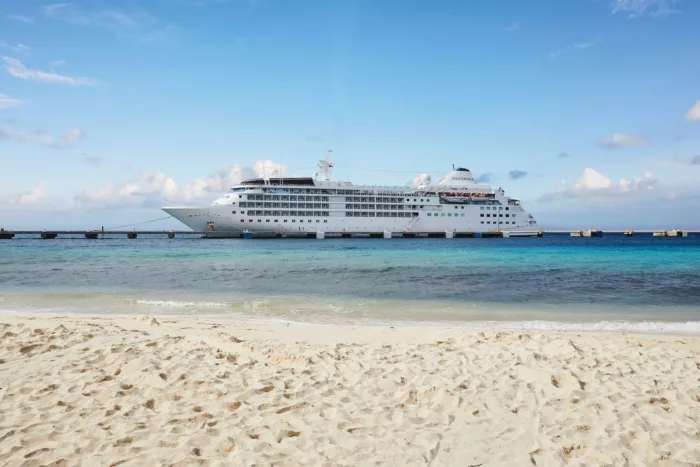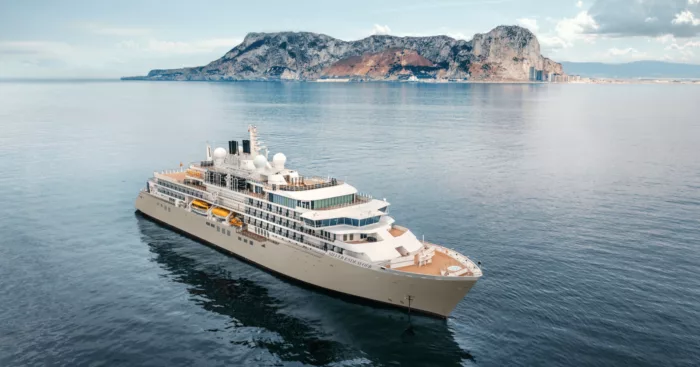Silversea Cruises
Wellness should be about balanced indulgence, not self-sacrifice - that's the philosophy behind Silversea's new programme called Otium, named after the Roman leisure time dedicated to bathing, talking, singing, drinking, eating and relaxing. The easygoing regime includes a 24-hour room-service menu of comfort food, as well as new spa treatments, relaxing baths and hot chocolate served on your balcony.
596
Passengers
411
Crew
2022
Launched
40700t
Tonnage
213m
Length
26m
Width
20kts
Speed
8
Decks
USD
Currency
Cruise Itinerary
Day 1
Fort Lauderdale, Florida, United States
Day 2
At Sea
Relax and make the most of the myriad of facilities available on board the ship, from fantastic entertainment to delicious and diverse dining options.
Day 3
Grand Turk Island, Turks and Caicos Islands
Day 4
At Sea
Relax and make the most of the myriad of facilities available on board the ship, from fantastic entertainment to delicious and diverse dining options.
Day 5
Saint Thomas, U.S. Virgin Islands
Day 6
Basseterre, Saint Kitts, Saint Kitts and Nevis
Day 7
Roseau, Dominica
Day 8
Port Elizabeth, Bequia, Saint Vincent and the Grenadines
Day 9
Fort-de-France, Martinique
Day 10
Saint John's, Antigua and Barbuda
Day 11
At Sea
Relax and make the most of the myriad of facilities available on board the ship, from fantastic entertainment to delicious and diverse dining options.
Day 12
San Juan (Puerto Rico), Puerto Rico
Days 13 - 14
At Sea
Relax and make the most of the myriad of facilities available on board the ship, from fantastic entertainment to delicious and diverse dining options.
Day 15
Fort Lauderdale, Florida, United States

Day 1
Fort Lauderdale, Florida, United States

Day 2
At Sea

Day 3
Grand Turk Island, Turks and Caicos Islands

Day 4
At Sea

Day 5
Saint Thomas, U.S. Virgin Islands

Day 6
Basseterre, Saint Kitts, Saint Kitts and Nevis

Day 7
Roseau, Dominica

Day 8
Port Elizabeth, Bequia, Saint Vincent and the Grenadines

Day 9
Fort-de-France, Martinique

Day 10
Saint John's, Antigua and Barbuda

Day 11
At Sea

Day 12
San Juan (Puerto Rico), Puerto Rico

Days 13 - 14
At Sea

Day 15
Fort Lauderdale, Florida, United States
Ship Details

Silversea Cruises
Silver Dawn
A new Dawn has arrived! Our tenth ultra-luxury ship joined our fleet in April 2022, sailing a worldwide itinerary that promises authentic, immersive experiences.
Cabins
All Prices

















